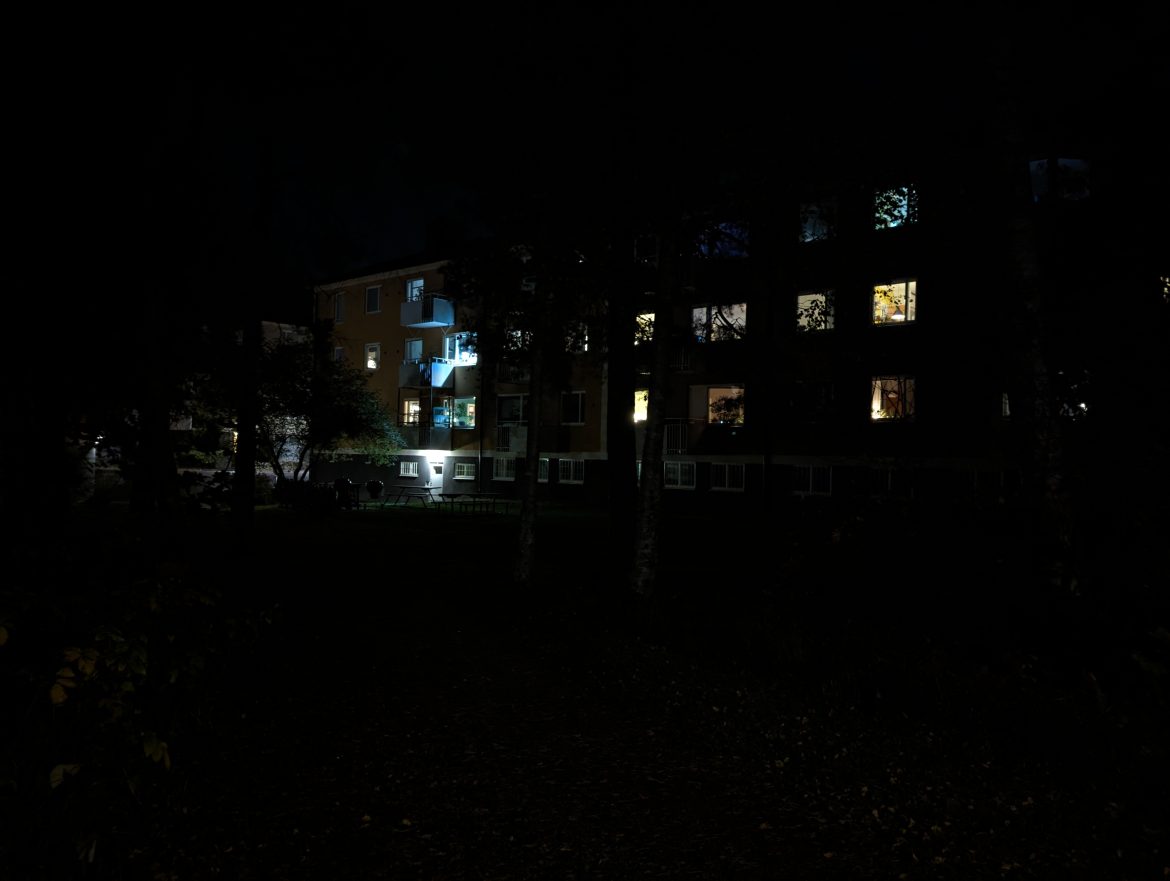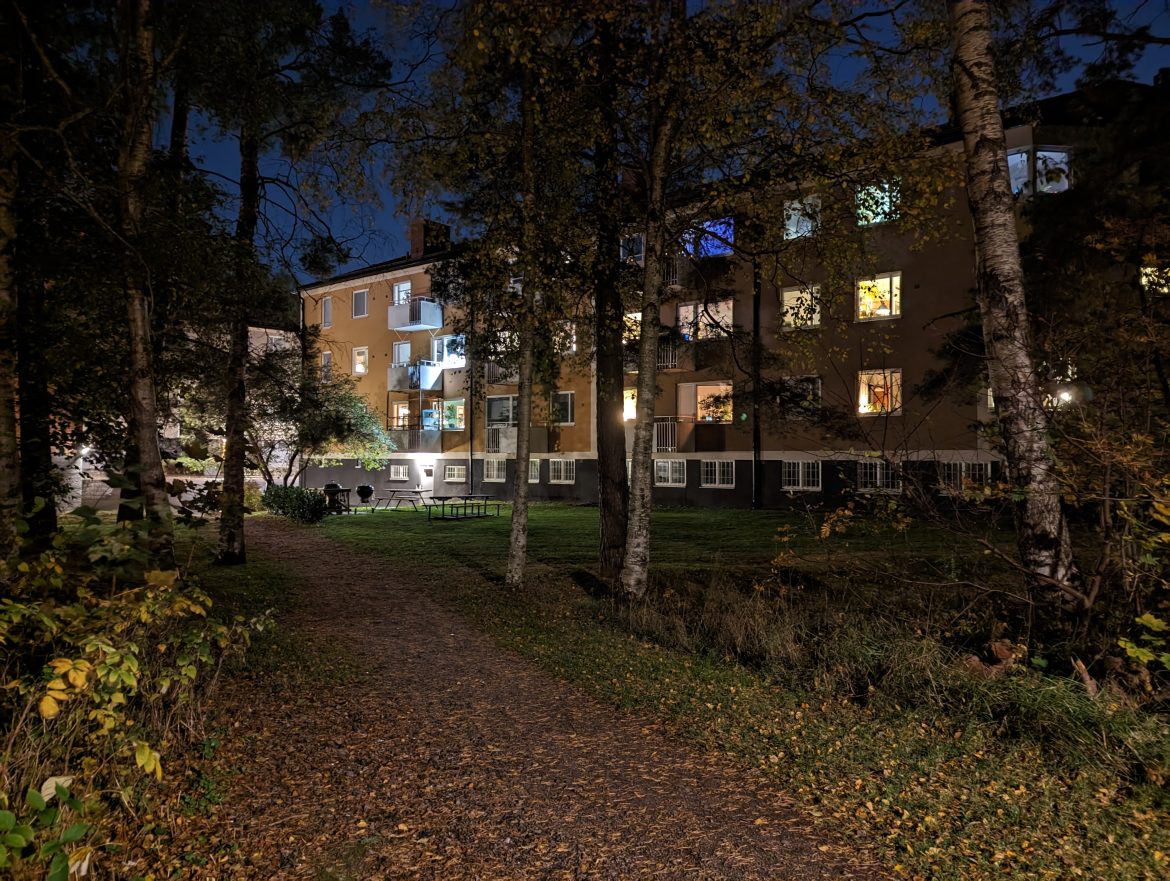TL;DR
Google's Pixel 7 Pro has finally arrived in Sweden, boasting a sleek design and an impressive camera system that rivals more expensive flagships. Powered by the Tensor G2 chip, it offers snappy performance for everyday tasks, though it falters slightly in demanding gaming. The standout feature is its exceptional computational photography, delivering stunning shots even in low light and an impressive 30x zoom. The software experience is polished with timely updates, but charging speed and battery life could be improved. Despite minor quirks like button placement and screen reflections, the Pixel 7 Pro offers outstanding value. Discover if this Google flagship is the right choice for you by diving into the full review!
Google’s history with its own mobile phones has been somewhat inconsistent (a trait not uncommon for Google, a company known for launching, renaming, or discontinuing products and services frequently).
It began with the now-discontinued Nexus series of phones. The initial model, Nexus One (manufactured by HTC), debuted in 2010 running Android 2.1. Google varied manufacturers with nearly every release, with companies such as LG, Samsung, Motorola, and Huawei producing Nexus phones. Consequently, significant differences existed between models from year to year, with some achieving greater success than others. The Nexus 5 remains a personal favorite, irrespective of manufacturer (we previously reviewed the Asus-made Nexus 7 tablet).
However, as is their pattern, Google discontinued the Nexus line and introduced the Pixel series in 2016. Unlike the Nexus series, which was available in Sweden, the Pixel series has not been officially sold there until now. With the release of the latest generation (Pixel 7 & Pixel 7 Pro), along with the more budget-friendly Pixel 6a from the prior generation, the Pixel series is now available in Sweden.
This review will focus on the flagship model, the Pixel 7 Pro.
Design and build quality
The immediate impression upon unboxing is the phone’s sleek design. The review unit is the “Hazel” color, a unique green-grey hue accented with gold details. The horizontal camera module spans the entire width of the rear panel, ensuring the phone rests flat on surfaces without wobbling when touched – a common issue with phones featuring camera modules concentrated on one side. The camera module also contributes to the phone’s distinctive aesthetic, setting it apart from competing devices.
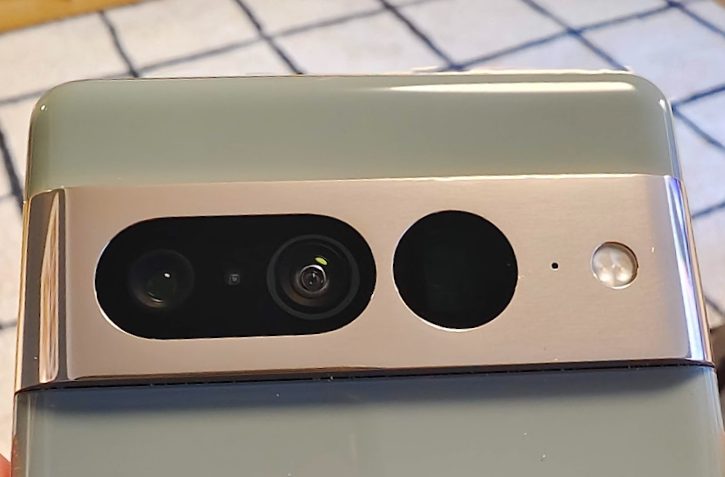
Weighing in at 212 grams, the phone, despite its relatively large size (6.7″ screen and dimensions of 162.9 x 76.6 x 8.9mm), doesn’t feel as heavy or cumbersome as one might expect.
The display features slightly rounded edges that meet the phone’s frame, a design choice that elicits mixed feelings. While aesthetically pleasing, this can be less than ideal from a usability standpoint. Reflections are readily apparent, and interacting with elements near the screen edges can be slightly challenging. However, the curvature is less pronounced compared to some competitors, and the panel terminates just before the rounded edges of the frame, which is a welcome detail.
A less appreciated aspect is the placement of the power and volume buttons. In a departure from common practice, Google has positioned them in reverse order compared to most manufacturers. Both buttons reside on the same side, with the power button located above the volume rocker. This unconventional arrangement feels counterintuitive and resulted in numerous accidental presses during the evaluation period.
Software
The Pixel 7 series launches with Android 13. As with successive iterations of iOS and other operating systems, the delta between versions is diminishing. Android 13 presents a refined and elegant experience. Google refers to it as “Material You,” offering customizable color schemes and UI elements that adapt to the chosen background image.
A key advantage of Pixel phones is Google’s commitment to software updates. Guaranteed Android version updates are promised until at least October 2025, and security updates until at least October 2027. With the exception of Samsung, no other Android phone manufacturer offers comparable long-term support.
Google also provides “Pixel Drops” (or Pixel Feature Drops) on a quarterly basis, introducing new features exclusive to Pixel devices. While some of these features may eventually appear on other phones, they are not universally adopted. These updates may not always be major or revolutionary, but they contribute to maintaining a sense of novelty and continued improvement over time.
Performance
The Google Pixel 7 Pro (and the Pixel 7) is powered by Google’s custom-designed Tensor G2, an evolution of the Google Tensor SoC found in the previous Pixel generation.
The phone exhibits excellent responsiveness, with apps launching instantly (the Pixel 7 Pro features 12 GB of RAM). Google appears to effectively utilize the available memory; apps remain resident in memory, allowing for rapid resumption even after extended periods of background operation. This contrasts with some Android phones that employ more aggressive app termination strategies.
However, running benchmark tests or graphically intensive games reveals that the Tensor G2 lacks the raw performance of Qualcomm’s or Apple’s flagship CPUs. Performance is roughly comparable to the Snapdragon 8 Gen 1, but the device can become quite warm and throttle under sustained heavy workloads.
A minor caveat is the occasional occurrence of micro-lags, reminiscent of those previously observed on Samsung phones powered by Exynos CPUs. This manifests primarily within Chrome on pages containing animations and video content. However, this appears to be a software-related issue that can be addressed through updates, as it hasn’t been observed in other applications. In general, the phone feels very responsive.
The screen
The device incorporates a 6.7″ LTPO OLED display with a refresh rate of up to 120Hz and a maximum resolution of 3120×1440 (QHD+). The default setting is the lower FHD+ resolution (approximately 1080p). Users wishing to take full advantage of the display’s capabilities (at the expense of some battery life) will need to manually adjust this setting.
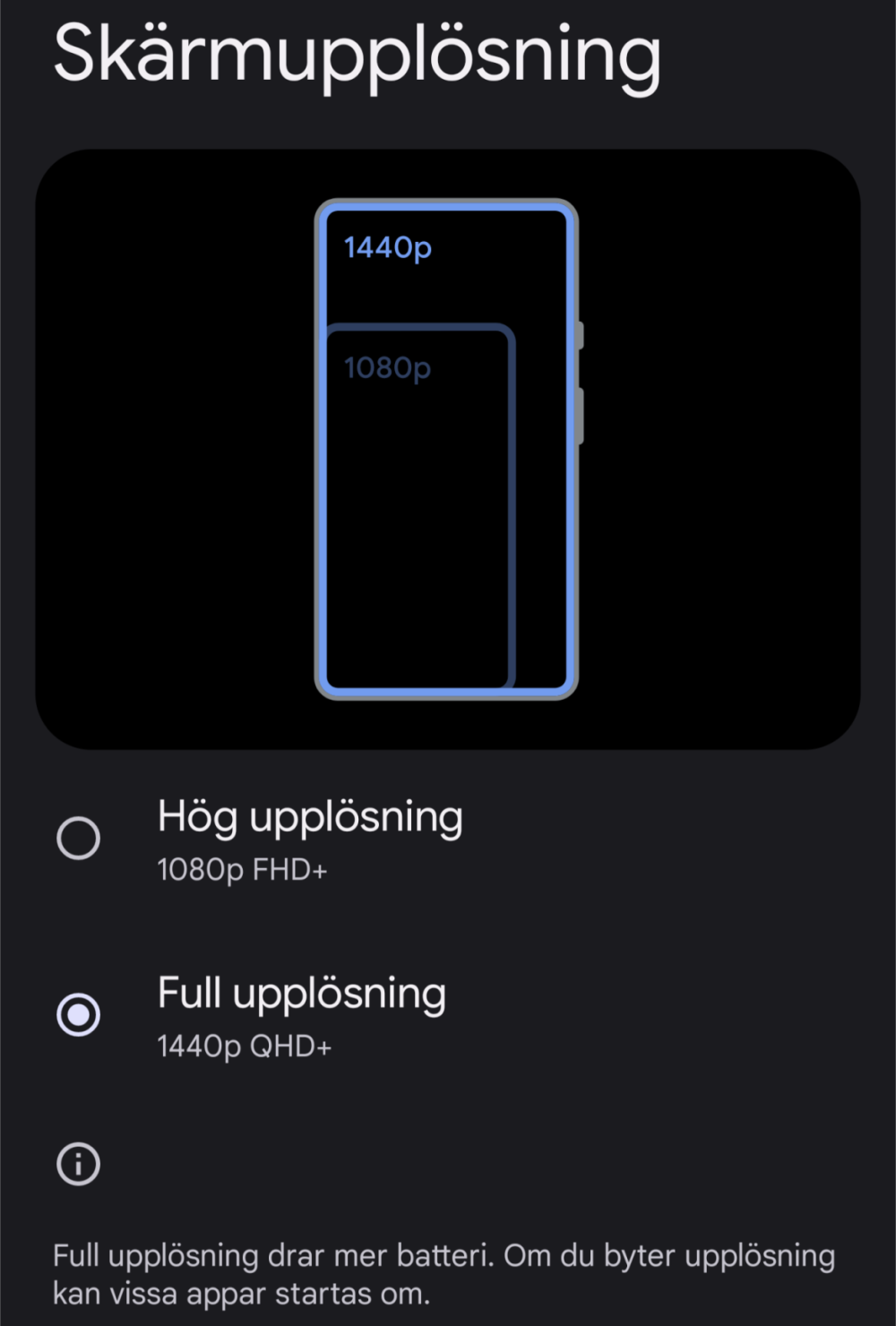
The display achieves a high level of brightness (up to 1400 nits, and up to 1000 nits in HDR), ensuring comfortable visibility even in bright outdoor conditions.
Color reproduction, black levels, and contrast are excellent, resulting in visually appealing photos and videos.
The automatic brightness adjustment can be overly sensitive, occasionally requiring manual intervention to increase brightness in dimly lit environments.
Sound
The Pixel 7 Pro features well-performing stereo speakers, delivering a full sound with acceptable bass response. The lower speaker exhibits slightly higher output, resulting in minor imbalance. Distortion becomes noticeable at volume levels exceeding 75-80% of maximum. However, the overall sound quality is good and suitable for gaming and short video clips.
Call quality is exceptional, likely the best observed during testing. This applies to both the user and the recipient of the call. Google employs active noise cancellation, ensuring clear communication even in noisy environments.
Security
Previous Pixel generations have employed varying security and unlocking mechanisms. The Pixel 4, for example, featured a “true” face unlock system comparable to Apple’s FaceID, resistant to spoofing with photos or videos. Conversely, the Pixel 6 relied solely on fingerprint authentication (which initially suffered from performance issues that were later addressed via software updates).
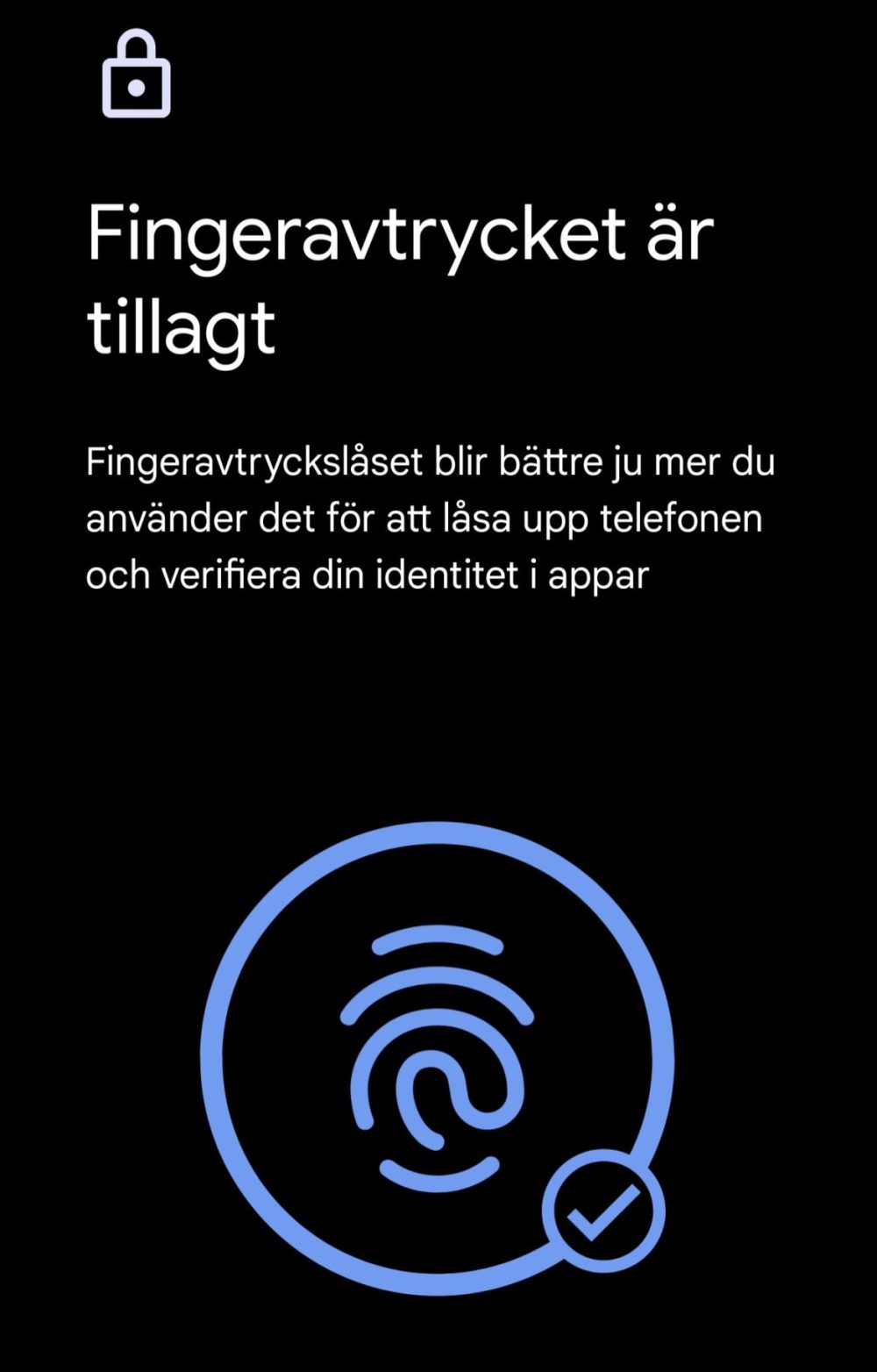
The Pixel 7 Pro incorporates an improved fingerprint sensor (which performs well) and a face unlock feature that Google claims is more robust, leveraging AI to generate a depth map of the user’s face for enhanced security. While not as secure as systems like FaceID and unsuitable for authentication with sensitive applications such as BankID, attempts to bypass it using photos and videos proved unsuccessful.
Both face unlock and fingerprint recognition are fast and reliable. Face unlock functionality diminishes in very low-light conditions, requiring reliance on fingerprint authentication.
Battery and charging Pixel 7 Pro
The Pixel 7 Pro is equipped with a 5000 mAh battery and supports 30W wired charging and 23 W wireless charging. According to Google, this allows for a 0-50% charge in 30 minutes. Testing corroborated this claim, achieving a 0-50% charge in approximately 32-33 minutes. Subsequent charging is slower, with a full charge taking approximately 1 hour and 40 minutes, which lags behind competitors offering 0-100% charging in around 40 minutes.
Initial battery life concerns during the testing period stemmed from heavy camera usage, particularly outdoors, where the screen’s increased brightness resulted in significant power consumption. However, with more typical usage patterns, battery performance improved. A full day of moderate to heavy use typically resulted in 30-40% remaining battery capacity.
Users planning to engage in extensive outdoor photography should consider topping off the battery beforehand or carrying a power bank, as battery drain can be substantial under those conditions.
Camera – Google Pixel 7 Pro
Exceptional photography has traditionally been a hallmark of the Pixel series. Google has historically prioritized “computational photography,” leveraging multi-frame capture, machine learning, and AI to produce optimal image quality. While initially successful, Google’s reliance on older sensors eventually led to a decline in relative performance compared to competitors employing more advanced hardware.
The Pixel 7 Pro addresses this with updated hardware. The primary camera is a 50 MP unit, the telephoto lens offers 5x optical zoom with a 48 MP sensor, and the ultrawide lens is 12 MP. Both the main camera and the telephoto lens feature optical image stabilization, and the ultrawide lens also functions as a macro lens. Combined with Google’s computational photography prowess, the result is exceptional image quality.
Google’s “30x Super Res Zoom” is particularly noteworthy. Despite the 5x optical zoom, the system utilizes intelligent upscaling and software enhancement to achieve a zoom range of up to 30x.




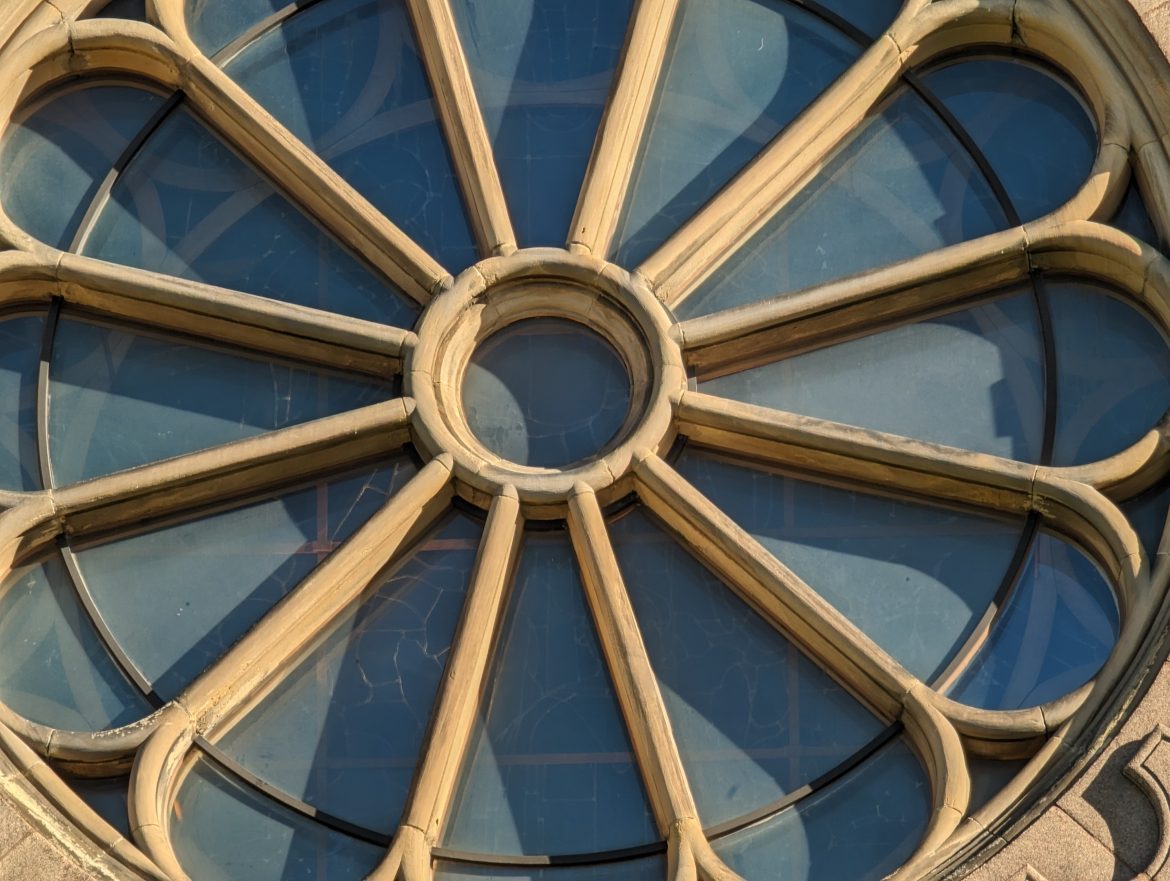

The difference between the wide-angle and 1x views is significant. Unlike many competitors, Google has included a true wide-angle lens, providing a substantial field of view.
Pixel phones have historically excelled in low-light photography, capturing multiple exposures and combining them through computational processing to produce impressive results. The Pixel 7 Pro significantly reduces the capture time compared to previous generations.
Even without night mode enabled, the camera captures pleasing images in low-light conditions, exhibiting sharpness, minimal noise, and good color and contrast.

The camera offers various creative modes, including options for capturing motion. The example below, “motion panning,” conveys a sense of speed through motion blur.

The wide-angle lens features autofocus and is used for macro photography. When the camera is positioned close enough to a subject, the macro mode activates automatically (though it can be disabled). Sharp focus is maintained at distances as close as 3 cm. The image below demonstrates the macro capabilities on a plastic plant in the office.

The Tensor G2 introduces AI-powered image sharpening for blurry photos. This functionality extends to images taken with other cameras or phones stored in the Google Photos library and performs remarkably well. The example below showcases a blurry, zoomed-in photo of a picture in the office:


Video recording is supported in 4K (30/60fps) and 1080p (30/60/120/240fps). Optical image stabilization is built-in, and the quality can be reduced from 4K to 1080p to enable enhanced stabilization by utilizing a larger portion of the sensor.
Similar to the photo capabilities, several creative video modes are available, including timelapse, slow motion, and cinematic.
Example of timelapse:
The following examples demonstrate the same walk filmed in 4K 60 FPS with standard stabilization, followed by the same walk with the “Action Pan” mode enabled (which reduces the resolution to 1080p).



